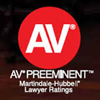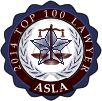129. Generally
Test for determining whether vessel is in navigation is status of ship. Roper v United States (1961) 368 US 20, 7 L Ed 2d 1, 82 S Ct 5.
In order for substantial-connection requirement for establishing employee’s status as seaman under 46 USCS Appx § 688(a)–that is, employee must have connection to vessel in navigation, or to identifiable group of such vessels, that is substantial in terms of both duration and nature–to serve requirement’s purpose, inquiry must concentrate on whether employee’s duties take employee to sea. Harbor Tug & Barge Co. v Papai (1997, US) 137 L Ed 2d 800, 117 S Ct 1535, 97 CDOS 3507, 97 Daily Journal DAR 6021, 1997 AMC 1817, 10 FLW Fed S 433.
Ship is not in navigation, so far as definition of “seaman” is concerned, if there is no present hope or intention of having her go to sea and if it would take long time to put her in shape for ocean voyage. Carumbo v Cape Code S.S. Co. (1941, CA1 Mass) 123 F2d 991 (disagreed with Offshore Co. v Robison (CA5 La) 266 F2d 769, 75 ALR2d 1296 (disagreed with Johnson v John F. Beasley Constr. Co. (CA7 Ill) 742 F2d 1054, cert den (US) 84 L Ed 2d 328, 105 S Ct 1180 and (disagreed with Barrett v Chevron, U.S.A., Inc. (CA5 La) 781 F2d 1067))).
It is not necessary that vessel be in actual motion on navigable waters for 46 USCS Appx § 688 to apply. McKie v Diamond Marine Co. (1953, CA5 Tex) 204 F2d 132 (disagreed with Offshore Co. v Robison (CA5 La) 266 F2d 769, 75 ALR2d 1296 (disagreed with Johnson v John F. Beasley Constr. Co. (CA7 Ill) 742 F2d 1054, cert den (US) 84 L Ed 2d 328, 105 S Ct 1180 and (disagreed with Barrett v Chevron, U.S.A., Inc. (CA5 La) 781 F2d 1067))).
In 46 USCS Appx § 688 actions, whether vessel was in navigation is question for jury to decide. Garcia v Queen, Ltd. (1973, CA5 Fla) 487 F2d 625 17 FR Serv 2d 1593; Noack v American S.S. Co. (1974, CA6 Ohio) 491 F2d 937; Sweeney v American S.S. Co. (1974, CA6 Ohio) 491 F2d 1085.
“In navigation” element determining who is crewmember within 46 USCS Appx § 688 is used in broad sense, is not confined strictly to actual navigating or moving of vessel, but instead means that vessel is engaged as instrument of commerce or transportation on navigable waters. Griffith v Wheeling Pittsburgh Steel Corp. (1975, CA3 Pa) 521 F2d 31, cert den 423 US 1054, 46 L Ed 2d 643, 96 S Ct 785.
For purpose of determining “employment-related connection to vessel in navigation,” court does not use “snapshot” test of situation existing only at time of injury; person who was not permanently assigned to vessel, who was land-based employee, and who spent, at most, 11 percent of his time on vessel was not covered under Jones Act. Easley v Southern Shipbuilding Corp. (1992, CA5 La) 965 F2d 1.
“Fleet,” for purpose of Jones Act employment connection, is identifiable group of vessels acting together or under one control; “fleet” does not simply mean any group of vessels employee happens to work aboard. Campo v Electro-Coal Transfer Corp. (1992, CA5 La) 970 F2d 51.
In determining whether floating structure is “vessel in navigation” for purpose of Jones Act, Second Circuit will adopt test that determines whether structure was being used primarily as work platform during reasonable period of time immediately preceding accident, whether structure was moored or otherwise secured at time of accident, and whether any transportation function performed by structure was incidental to primary purpose as work platform. Tonnesen v Yonkers Contracting Co. (1996, CA2 NY) 82 F3d 30, 1996 AMC 1777.
Requirement that vessel be “in navigation” means only that it be actively performing water-based marine function at pertinent time. Brown v Stanwick International, Inc. (1979, Fla App D3) 367 So 2d 241.
130. Navigable waters
“In navigation” requirement arising under 46 USCS Appx § 688 is not confined to actual navigation or movement of vessel, but instead means that vessel is engaged as instrument of commerce or transportation on navigable waters. Griffith v Wheeling Pittsburgh Steel Corp. (1975, CA3 Pa) 521 F2d 31, cert den 423 US 1054, 46 L Ed 2d 643, 96 S Ct 785.
Reservoir is not navigable waterway for purpose of Limitation of Liability Act where it is entirely within state, was created for recreation and flood control, and is not accessible to vessels due to dam. Saahir v Collins (1992, CA5 Tex) 956 F2d 115.
Although Jones Act does not focus on location of vessel at time of injury, Jones Act jurisdiction still requires relationship to navigable waters; thus, ship with no connection to navigable waters is not source of Jones Act jurisdiction. Weaver v Hollywood Casino-Aurora, Inc. (2001, CA7 Ill) 255 F3d 379.
46 USCS Appx § 688 has no application to injuries sustained outside of navigable waters. Wahlgren v Standard Oil Co. (1941, DC NY) 42 F Supp 992, 1941 AMC 1788.
Vessel need not be engaged in navigation at precise moment when accident occurs; however, craft commonly thought of as vessel must be committed to navigation on navigable waters to be considered vessel for purposes of 46 USCS Appx § 688. Bernardo v Bethlehem Steel Co. (1961, SD NY) 200 F Supp 534, 5 FR Serv 2d 737, affd (CA2 NY) 314 F2d 604.
Cause of action under 46 USCS Appx § 688 requires presence of “navigable” body of water and “navigable” body of water must constitute part of continuous water system capable of sustaining interstate or foreign commerce; thus, landlocked lake wholly within one state upon which plaintiff was injured was not navigable within meaning of admiralty law. Oseredzuk v Warner Co. (1972, ED Pa) 354 F Supp 453, affd without op (CA3 Pa) 485 F2d 680, cert den 415 US 977, 39 L Ed 2d 873, 94 S Ct 1563.
131. –Particular waters
Accident occurring on dredge which operated in area exposed at low tide and for eight hours out of twelve, occurred in navigable water within meaning of 46 USCS Appx § 688. Gahagan Const. Corp. v Armao (1948, CA1 Mass) 165 F2d 301, cert den 333 US 876, 92 L Ed 1152, 68 S Ct 905.
Dredge surveyor working on dredge was not employed on vessel operating on navigable waters where waters were landlocked and used only for irrigation, although dredge floated on water and engaged in commercial activity. Stanfield v Shellmaker, Inc. (1989, CA9 Cal) 869 F2d 521.
Landlocked bayou cluttered with trees, water hyacinths and other vegetation, not, in fact, navigable even by smallest outboard motor boat is not navigable within meaning or intendment of 46 USCS Appx § 688. Ingram v Associated Pipeline Contractors, Inc. (1965, ED La) 241 F Supp 4.
Landlocked lake wholly within one state upon which plaintiff was injured was not navigable within meaning of 46 USCS Appx § 688. Oseredzuk v Warner Co. (1972, ED Pa) 354 F Supp 453, affd without op (CA3 Pa) 485 F2d 680, cert den 415 US 977, 39 L Ed 2d 873, 94 S Ct 1563.
Employee is not seamen within meaning of 46 USCS Appx § 688 where he was driving marsh buggy, amphibious personnel carrier, in marsh of depth of about 12 inches of water where marsh buggy, was not vessel traveling in navigable stream. Percle v Western Geophysical Co. (1981, ED La) 528 F Supp 227.
132. Effect of presence or absence of regular crew
Particular vessels were not in navigation for purposes of 46 USCS Appx § 688 where boats had neither captain or crew. Desper v Starved Rock Ferry Co. (1952) 342 US 187, 96 L Ed 205, 72 S Ct 216, reh den 342 US 934, 96 L Ed 695, 72 S Ct 374; Hawn v American S.S. Co. (1939, CA2 NY) 107 F2d 999; Antus v Interocean S.S. Co. (1939, CA6 Ohio) 108 F2d 185.
Vessels were in navigation for purposes of 46 USCS Appx § 688 where there were number of officers and men of normal crew on board, engine-room men being under orders and supervision of ship’s officers, and regular sea watches being stood. Carumbo v Cape Cod S.S. Co. (1941, CA1 Mass) 123 F2d 991 (disagreed with Offshore Co. v Robison (CA5 La) 266 F2d 769, 75 ALR2d 1296 (disagreed with Johnson v John F. Beasley Constr. Co. (CA7 Ill) 742 F2d 1054, cert den (US) 84 L Ed 2d 328, 105 S Ct 1180 and (disagreed with Barrett v Chevron, U.S.A., Inc. (CA5 La) 781 F2d 1067))).
Vessel was “in navigation” under 46 USCS Appx § 688 when temporarily laid up because part of crew was on vacation and vessel was without doctor, but there was sufficient crew to navigate vessel. Alaska Dept. of Health v Alaska Industrial Board (1951, DC Alaska) 101 F Supp 171.
Vessel with respect to which plaintiff was hired as “able seaman” on day before his injury was not in navigation where, although vessel was afloat at time of injury, (1) vessel was reconstructed vessel which had not yet had sea trials, (2) only skeletal crew had been assembled as of day of injury, (3) delivery of completed vessel by contractor and acceptance by owners and insurers had not yet occurred, and (4) all efforts of crew members were designed to place vessel “in navigation.” Bohlinger v Allied Tankships, Inc. (1985, ED Va) 613 F Supp 161.









